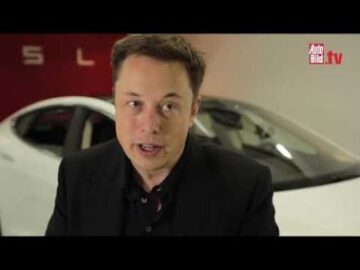11 Jul How to calculate cost per unit

Thus, this definition does not talk about any other detail with regards to COGS like cost of services. However, an increasing COGS to Sales ratio would inculcate that the cost of generating goods or services is increasing relative to the sales or revenues of your business. Thus, there is a need to control the costs in order to improve the profit margins of your business. In this case let’s consider that Harbour Manufactures use a periodic inventory management system and FIFO method to determine the cost of ending inventory. Now, the cost of closing inventory is calculated by taking the cost of the latest or the most recent purchase and then calculating backwards till the time all the items in inventory are considered.

In addition to this, investors can also access Microsoft’s operating expenses and Cost of Sales independently. This will help them to know if costs are increasing or decreasing over a period of time. Thanks to greater volume discounts, or economies of scale (as your unit volumes increase), the average unit cost also reduces.
Strategies to Minimise Cost Per Unit
Operating costs form a substantial portion of the total production expenses. So, to manage such costs, manufacturing units have to adopt operational cost reduction strategies. These include putting specialized machinery and equipment and evaluating alternatives to machinery. The importance of measuring the average cost is tied to setting the pricing of products appropriately, wherein enough profits are generated per sale for the company’s operations to remain sustainable.
As a business owner, you determine the fixed costs via contract agreements or cost schedules. These are the foundational costs incurred to carry out your business operations. This is because these are not related to the core operations of your business. Examples of non-operating expenses include interest charges, loss on the sale of assets, cost of investments, etc.
Difference Between Cost Per Unit and Price Per Unit
If the per-unit selling price is greater than the per-unit cost of the product, then your business has earned profits. While if the per-unit selling price is less than the per-unit cost of your products, this means your business has suffered losses. Business D has the lowest unit costs, perhaps because it operates at higher output – potentially benefitting from economies of scale.
- EPS is a key performance indicator used by shareholders to assess performance.
- Therefore, it is important for you as a business to keep COGS low in order to earn higher profits.
- Once the break-even number of units is determined, the company then knows what sales target it needs to set in order to generate profit and reach the company’s financial goals.
- Therefore, using the high-low method, we estimate the variable cost per unit is $12 and fixed costs are $35,000.
The best contribution margin is 100%, so the closer the contribution margin is to 100%, the better. The higher the number, the better a company is at covering its overhead costs with money on hand. Investors examine contribution margins to determine if a company is using its revenue effectively.
Business
In other words, it measures how much money each additional sale “contributes” to the company’s total profits. In these kinds of scenarios, electricity will not be considered in the contribution margin formula as it represents a fixed cost. However, if the electricity cost increases in proportion to consumption, it will be considered a variable cost. Where C is the contribution margin, R is the total revenue, and V represents variable costs. In this case let’s consider that Harbour Manufacturers use a perpetual inventory management system and LIFO method to determine the cost of ending inventory.
You then subtract all the operating costs of your business from the gross income to calculate operating profit. Following this, you record all the non-operating expenses below the operating profit in the income statement. You then deduct all the non-operating expenses from operating profit to calculate Earnings Before Taxes (EBT). Amid the conversion of raw materials it purchased into finished goods ready to be sold to its customers, the manufacturer incurred a total of $500,000 in fixed costs.
Factors that Increase a Company’s Break-Even Point
The COGS includes all the direct costs and expenses of producing the goods. The formula for calculating COGS involves adding opening stock, direct expenses, and purchases and then subtracting closing stock from this amount. Now, it is important for you as a business to calculate the per unit product cost as it helps you in setting an appropriate selling price for your product.
Job shops produce products in groups such as shirts with your company logo. In job shops, larger production runs lower unit costs because the set-up costs of designing the logo and creating the silk-screen pattern are spread across more shirts. In an assembly factory, per-unit costs are reduced by more seamless technology with robots.

A break-even point analysis is used to determine the number of units or dollars of revenue needed to cover total costs (fixed and variable costs). For instance, your initial fixed costs would include the rent of the manufacturing premises and employee salaries. Thus, you keep a regular check on the fixed cost contracts as a business owner. However, fixed costs do not change with the change in the level of production.
Thus, items sold at a specific cost during the accounting period can be included in the cost of goods sold. And the costs of particular items left or in hand can be included in the closing inventory. This is because items recently purchased at higher price levels increase the cost of goods sold and reduce the net income. The COGS to Sales ratio showcases the percentage of sales revenue that is used to pay for the expenses that vary directly with the sales of your business. This ratio indicates the efficiency of your business to keep the direct cost of producing goods or rendering services low while generating sales. The Product Cost helps you to determine the selling price of your finished products and know whether your business has earned profits, incurred losses, or has achieved the break-even point.
These statements help you in understanding the fixed and variable costs of your business. The sum of the manufacturer’s fixed and variable costs, i.e. the total cost of production, comes out to $600,000. Depending on the various factors reducing employees’ hours during covid that affect the cost per unit, there are different ways of reducing fixed and variable costs in your ecommerce operations. Therefore, using the high-low method, we estimate the variable cost per unit is $12 and fixed costs are $35,000.
Callon Petroleum Company Announces Second Quarter 2023 Results – Callon Petroleum Company
Callon Petroleum Company Announces Second Quarter 2023 Results.
Posted: Wed, 02 Aug 2023 20:20:21 GMT [source]
But to accurately calculate cost per unit, it’s important to understand what is considered fixed costs versus variable costs. Companies that manufacture goods will have a more clearly defined calculation of unit costs while unit costs for service companies can be somewhat vague. Variable expenses change in proportion to the level of production or sales. Think raw materials, shipping costs, commissions, and other fluctuating expenses. Alternatively, the company can also try finding ways to improve revenues.
Interpretation of Break-Even Analysis
Therefore, such a method is applicable only in cases where it is possible to physically differentiate the various purchases made by your business. However, the disadvantage of using the LIFO method is that it leads to lower profits for your business when inflation is high. The First In First Out Method, also known as FIFO Method, is a method of inventory valuation that is based on the assumption that the goods are consumed in the sequence in which they are purchased. Following are the methods of inventory valuation that are applicable to both manufacturing and merchandising inventories. Thus, the ending inventory according to this method is $23,600 and the cost of goods sold is $17,600. Thus, the ending inventory according to this method is $27,100 and the cost of goods sold is $16,800.
For instance, if your business undergoes reorganization due to bankruptcy. All of these are one-time costs and form a part of the non-operating expenses. Further, fixed costs in your income statement also reflect on your balance sheet and cash flow statement. The fixed costs on your balance sheet may either reflect your short-term or long-term liabilities. Whereas fixed charges paid in cash get reflected in your company’s cash flow statement.

You can do so by optimizing product sourcing, finding lower-cost manufacturers, and/or finding suppliers located closer to you. A low per-unit cost is an indicator of efficient production and logistics, which ensures profit is being made per sale. Of course, quality plays a role, as higher quality or premium goods typically cost more to produce than less durable or cheaper materials.
EPS is a key performance indicator used by shareholders to assess performance. The size of the business generally matters when it comes to economies of scale. Internal economies of scale are based on management decisions, while external ones have to do with outside factors. Therefore, all the above expenses excluding income taxes and interest are your business’s operating expenses.

